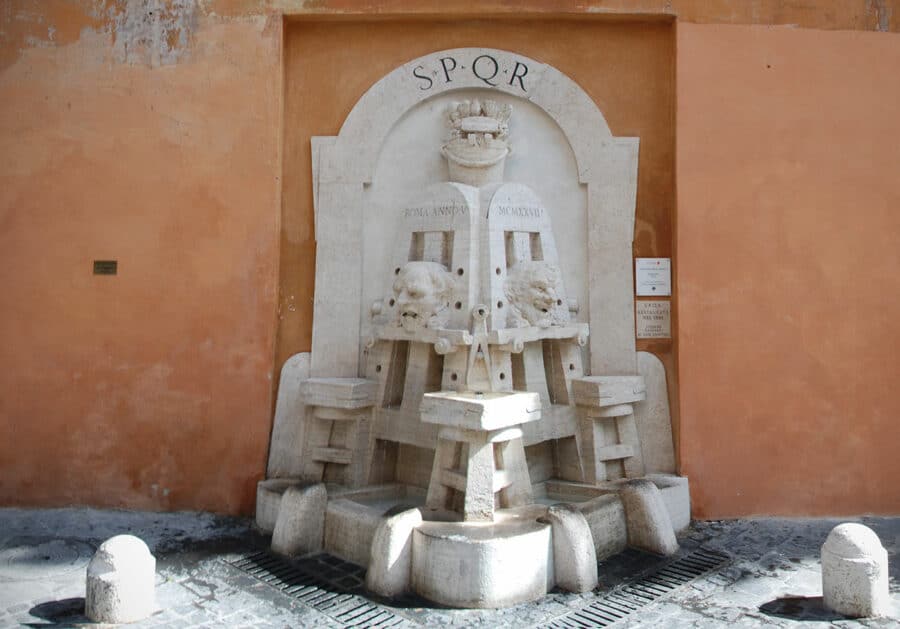Among the most streets bohemian and suggestive of the capital is undoubtedly via Margutta. In the Campo Marzio district, parallel to via del Babuino starting from piazza del Popolo going down from the Pincio, via Margutta is a street out of time in which the clock seems to have stopped. It is really difficult not to be fascinated while walking along this street full of artists' shops, art galleries, artisans' workshops, small bistros or taverns where you can stop for something to eat. The most beautiful part is the total serenity despite being just a few meters from the most chaotic Via del Babuino and Via del Corso. A refuge from the chaos of the city, among lanterns and climbing ivy on period buildings. Without cars and big shops, here you can only hear the sound of footsteps on the cobblestones and the shouting of people walking or browsing in the shops.
History and curiosities of via Margutta
Do you know where the street name? The origin is a bit uncertain. It is hypothesized that the name derives from the Marguti family who lived here or from the contraction of the word Marisgutia or Sea drop from a stream that ran down from the Pincio towards the Tiber. Another hypothesis is that it was the name of a hero of a comic poem of the Renaissance chosen by the painters who first came to live in via Margutta after that during the period of Pope Pius IX a Vatican fixer took care of building a sewerage system and providing it with a master plan to make it habitable. Up to mid-16th century in fact the street was simply the "annex" of via del Babuino where the carriages and carts were parked, there were warehouses, stables, stables and vegetable gardens as well as the houses of bricklayers, marble workers and coachmen. Since the mid-16th century however numerous artists including painters, sculptors and various craftsmen (especially foreigners) chose it as the location of their shops as well as their homes and gardens.
Via Margutta and its artists
Via Margutta is the street in Rome most associated with art and it probably immediately comes to mind exhibition of the “One Hundred Painters” which takes place at certain times of the year and has been going on since 1953. On this occasion the Roman road becomes an open-air art gallery where you can admire while walking over a thousand works by artists from all over the world who make the road even more suggestive. However, the street has always been frequented by artists, even beyond visual art. In the nineteenth century within theInternational artistic association you met poets, writers and musicians such as Puccini, Wagner, Zola and D'Annunzio but also Sartre and Simone de Beauvoir, Sibilla Aleramo, Moravia and Elsa Morante. Not to mention great painters such as Picasso, Guttuso, Burri, Balla, De Chirico and many others who frequented the workshops in via Margutta and lived in the surrounding area.
Via Margutta and cinema: a great love
Such a beautiful and timeless street could not fail to fascinate cinema too, of course! In the movie "Roman holidays" Audrey Hepburn goes to live in an attic of one of the delightful 16th century houses that characterize Via Margutta (exactly at number 51) and this is perhaps the film that is most associated with this street. Numerous films from the 1960s have scenes shot here among cobbled streets and artisans' workshops: among these “An American in Rome” in which Alberto Sordi meets an American painter here, “Le Letters from Capri” by Mario Soldati in which the road often recurs but there is also a film entitled “via Margutta” by Mario Camerini from 1960. It was precisely in the period between the 50s and 60s that via Margutta was chosen as the place to rent an apartment by great cinema artists such as Federico Fellini, Giulietta Masina and Anna Magnani as evidence of the great love relationship with this timeless street in Rome.

A walk in via Margutta is an enjoyable moment to include in every Roman itinerary. Rome offers many places in which to find a moment of peace from the noise and traffic and in addition to the many parks and villas, among the quietest streets in which to rest your mind and soul there is certainly the artists' street. Peek into the shops, talk to the artists, look up at the wooden ceilings of the buildings, browse the gardens if you find an open gate and enjoy the quiet in the heart of the city.






